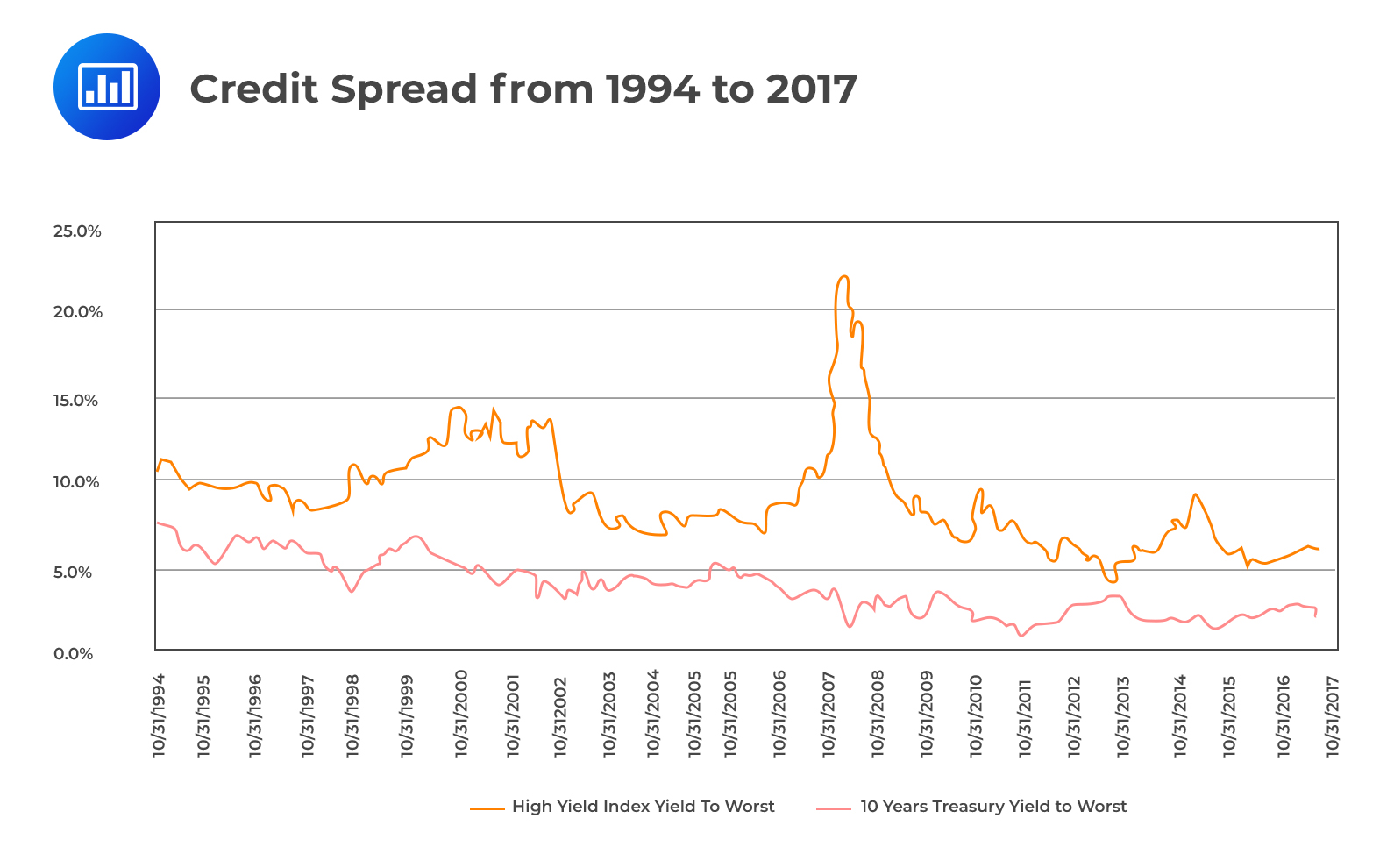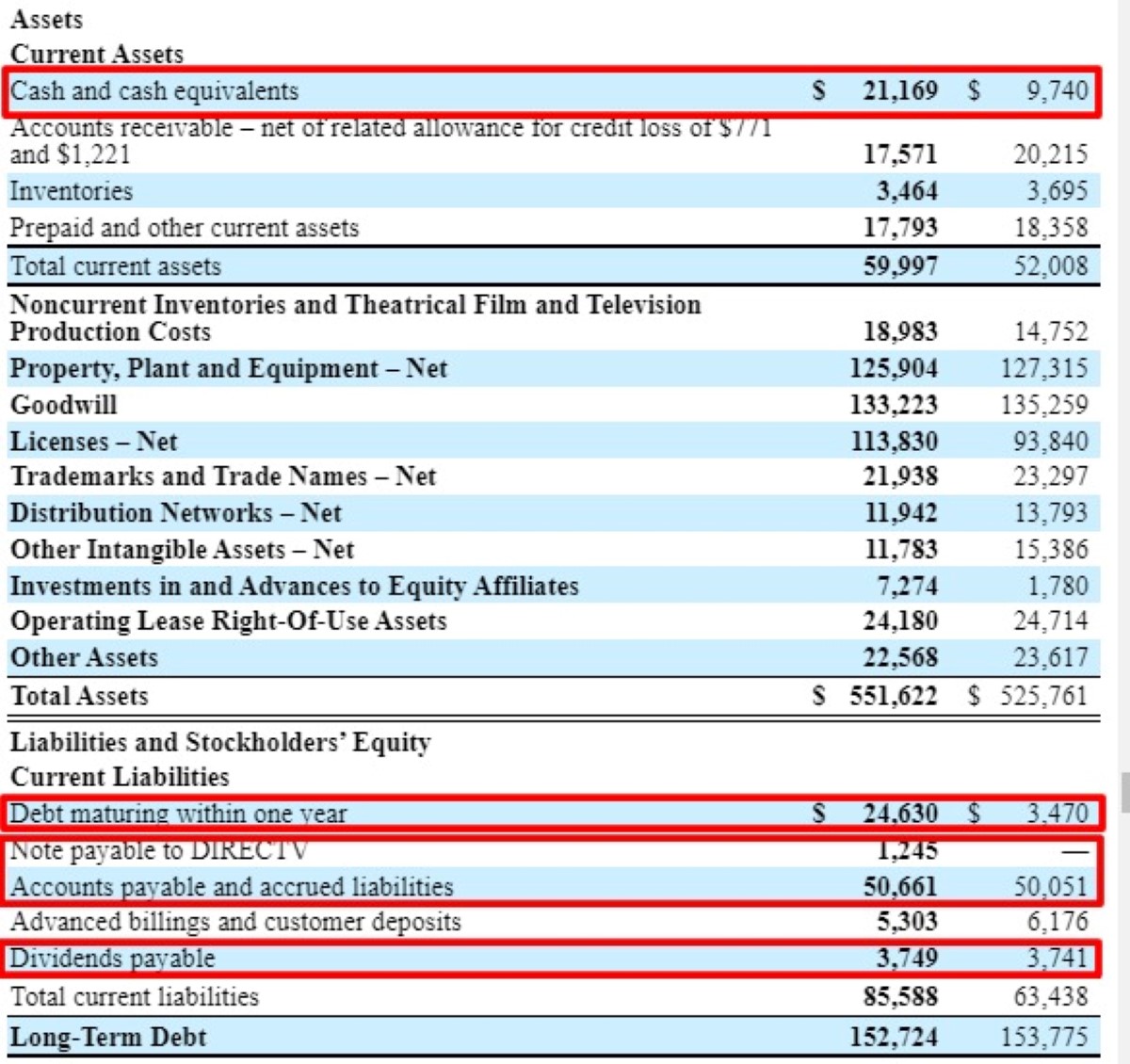

Finance
What Is A Credit Grantor
Published: January 13, 2024
Learn what a credit grantor is and how it plays a crucial role in the world of finance. Discover the key responsibilities and functions of a credit grantor to make informed financial decisions.
(Many of the links in this article redirect to a specific reviewed product. Your purchase of these products through affiliate links helps to generate commission for LiveWell, at no extra cost. Learn more)
Table of Contents
Introduction
A credit grantor plays a crucial role in the world of finance. Whether you’re applying for a credit card, a loan, or any form of credit, a credit grantor is the entity responsible for evaluating your creditworthiness and deciding whether to extend credit to you. In simple terms, a credit grantor is a financial institution or lender that assesses the risk associated with granting credit to individuals or businesses.
Understanding the role and responsibilities of a credit grantor is essential for anyone seeking credit as it helps demystify the credit evaluation process and provides insights into how credit decisions are made. It’s not just about having a high credit score; there are several factors that credit grantors consider when evaluating credit applications.
In this article, we will delve into the world of credit grantors, exploring their functions, evaluation processes, rights, responsibilities, and their impact on credit history. By the end, you will have a clearer understanding of the vital role credit grantors play in the financial landscape.
Definition and Overview
A credit grantor is a financial institution or lender that provides credit to individuals or businesses. They evaluate the creditworthiness of applicants and decide whether to extend credit based on various factors, such as credit history, income, debt-to-income ratio, and the purpose for which the credit is being sought.
Credit grantors can take different forms, including banks, credit unions, credit card companies, mortgage lenders, and online lenders. They play a vital role in the modern economy by providing individuals and businesses with the financing needed to make purchases, invest in assets, or grow their operations.
When considering a credit application, credit grantors assess the risk associated with lending funds to the applicant. This involves analyzing the applicant’s financial history, including their credit score, payment history, and outstanding debts. Additionally, credit grantors consider the purpose of the credit being sought and evaluate whether the individual or business will be able to repay the borrowed funds based on their income and financial stability.
It’s important to note that credit grantors are regulated by financial authorities to ensure fair lending practices and protect consumers. They must comply with regulations and guidelines that dictate how they can evaluate credit applications and extend credit to borrowers.
In the next section, we will explore the roles and responsibilities of credit grantors to provide a deeper understanding of their function in the credit ecosystem.
Roles and Responsibilities of a Credit Grantor
A credit grantor has several key roles and responsibilities in the credit evaluation process. Understanding these roles is essential for borrowers to navigate the credit application process effectively. Here are the primary roles and responsibilities of a credit grantor:
- Evaluating Credit Applications: One of the main responsibilities of a credit grantor is to thoroughly evaluate credit applications. They assess an applicant’s creditworthiness by reviewing their credit history, income, debt levels, and other relevant financial information. This evaluation process helps the credit grantor determine the level of risk associated with extending credit to the applicant.
- Assessing Risk: Credit grantors evaluate the risk associated with extending credit to an applicant. They consider factors such as credit scores, previous payment history, employment stability, and debt-to-income ratio. This assessment helps them determine the likelihood of the applicant repaying the credit as agreed.
- Determining Credit Limits and Terms: Based on the evaluation of the credit application and the associated risk, credit grantors determine the credit limits and terms for approved borrowers. The credit limit defines the maximum amount that can be borrowed, while the terms include details such as interest rates, repayment schedules, and any applicable fees.
- Managing Credit Accounts: Once credit is granted, credit grantors are responsible for managing and maintaining the credit accounts. This includes setting up billing cycles, sending monthly statements, and collecting payments. They also handle inquiries and disputes related to the credit account.
- Monitoring Credit Performance: Credit grantors continuously monitor the credit performance of their borrowers. They track payment patterns, credit utilization, and any changes in the borrower’s financial situation. Monitoring credit performance helps credit grantors identify potential risks or opportunities for adjustments to the credit terms.
- Enforcing Credit Agreements: If a borrower fails to fulfill their obligations as per the credit agreement, credit grantors have the responsibility of enforcing the terms. This may involve initiating collection efforts, reporting delinquencies to credit bureaus, or taking legal action to recover the outstanding debt.
By fulfilling these roles and responsibilities, credit grantors maintain the integrity and sustainability of the credit ecosystem. They ensure that credit is extended to borrowers who are capable of managing their financial commitments while mitigating the inherent risks associated with lending.
Next, we will explore the different types of credit grantors, illustrating the diverse landscape in which they operate.
Types of Credit Grantors
Credit grantors come in various forms, each specializing in different types of credit and catering to specific borrower needs. Understanding the different types of credit grantors can help borrowers identify the right institution to meet their financing requirements. Here are the common types of credit grantors:
- Banks: Traditional banks are one of the most common types of credit grantors. They offer a wide range of credit products, including personal loans, mortgages, and credit cards. Banks are heavily regulated and provide credit to individuals and businesses based on their financial stability and creditworthiness.
- Credit Unions: Similar to banks, credit unions are financial institutions that provide credit to members who share a common affiliation, such as employees of a specific company or members of a particular community or organization. Credit unions typically offer competitive interest rates and lower fees compared to traditional banks.
- Credit Card Companies: These specialized credit grantors focus on issuing credit cards to individuals. They assess the applicant’s creditworthiness and determine a credit limit for the approved cardholder. Credit card companies earn revenue through interest charges, annual fees, and transaction fees.
- Mortgage Lenders: These credit grantors specialize in providing home loans and mortgage financing. They assess an applicant’s creditworthiness, income, and the value of the property being financed to determine the terms and conditions of the mortgage, including the interest rate and repayment period.
- Online Lenders: With the advancement of technology, online lenders have emerged as a popular alternative to traditional credit grantors. They provide various types of loans, such as personal loans, student loans, and small business loans, through online platforms. Online lenders often offer quick approval processes and flexible terms.
- Retailers and Merchants: Many retailers and merchants act as credit grantors by offering credit to their customers through store credit cards or financing options. These credit accounts allow customers to make purchases and repay the amount over time, often with interest charges or deferred interest promotions.
These are just a few examples of the types of credit grantors in the financial landscape. Each type has its own criteria for evaluating credit applications and unique offerings to cater to different borrowing needs.
Next, we will explore the credit grantor’s evaluation process and the factors they consider when making credit decisions.
Credit Grantor’s Evaluation Process
The credit grantor’s evaluation process plays a crucial role in determining whether an applicant will be granted credit. This process involves a comprehensive assessment of the applicant’s creditworthiness, financial stability, and ability to repay the borrowed funds. Here are the key factors and steps involved in the credit grantor’s evaluation process:
- Credit History: One of the primary factors credit grantors consider is the applicant’s credit history. This includes reviewing the credit report, which provides details of the individual’s past borrowing and repayment behavior. A positive credit history, with a record of timely payments and responsible credit utilization, increases the chances of approval.
- Credit Score: Credit grantors use credit scores, such as the FICO score or VantageScore, to assess an applicant’s creditworthiness. These scores are derived from the credit report data and indicate the individual’s credit risk. A higher credit score is generally associated with more favorable credit terms and higher chances of approval.
- Income and Employment: Credit grantors evaluate the applicant’s income and employment stability to gauge their ability to repay the borrowed funds. A steady income and employment history provide reassurance that the borrower has a reliable source of funds to meet their financial obligations.
- Debt-to-Income Ratio: The debt-to-income ratio is a measure of the applicant’s monthly debt obligations compared to their monthly income. Credit grantors consider this ratio to assess the applicant’s financial capacity to take on additional debt. A lower debt-to-income ratio indicates a lower risk of default.
- Purpose of Credit: Credit grantors consider the purpose for which the credit is being sought. A clearly defined and legitimate purpose, such as a home purchase or business investment, may increase the chances of approval as it demonstrates responsible financial planning.
- Collateral and Security: In some cases, credit grantors may require collateral or security for certain types of credit, such as mortgages or auto loans. Collateral provides an additional layer of protection for the credit grantor, as they can seize the asset if the borrower defaults on the loan.
- Application and Documentation: The credit grantor’s evaluation process also involves reviewing the credit application and supporting documentation provided by the applicant. This may include identification documents, proof of income, bank statements, and other relevant financial information.
By considering these factors and following a systematic evaluation process, credit grantors can make informed decisions regarding credit approvals. It’s important for applicants to understand these factors and ensure that their financial profile aligns with the credit grantor’s requirements to increase their chances of approval.
Next, we will explore the rights and responsibilities of credit grantors, outlining their obligations and the protections afforded to borrowers.
Credit Grantor’s Rights and Responsibilities
Credit grantors have both rights and responsibilities in their role as lenders. Understanding these rights and responsibilities is essential for borrowers to be aware of the terms and conditions governing their credit agreements. Here are the key rights and responsibilities of credit grantors:
- Right to Evaluate Credit Applications: Credit grantors have the right to evaluate credit applications and make decisions based on their assessment of the applicant’s creditworthiness. They have the discretion to approve or deny credit based on their evaluation process.
- Right to Set Credit Terms: Credit grantors have the right to define the terms and conditions of the credit agreement, including the interest rate, repayment schedule, late payment fees, and any other applicable charges. These terms are typically disclosed to the borrower before the credit is extended.
- Right to Enforce Credit Agreements: If a borrower fails to meet the terms of the credit agreement, credit grantors have the right to take appropriate action to recover the outstanding debt. This may include collection efforts, reporting the delinquency to credit bureaus, or pursuing legal action.
- Responsibility to Provide Clear Disclosures: Credit grantors have the responsibility to provide clear and transparent disclosures about the terms and costs associated with the credit agreement. This includes disclosing the interest rate, fees, repayment terms, and any potential penalties or charges.
- Responsibility to Safeguard Borrower Information: Credit grantors have an obligation to protect the borrower’s personal and financial information. They must take reasonable measures to ensure the security and confidentiality of the borrower’s data to prevent unauthorized access or misuse.
- Responsibility to Comply with Laws and Regulations: Credit grantors must comply with applicable laws, regulations, and industry guidelines governing lending practices. This includes fair lending laws, anti-discrimination laws, and consumer protection regulations.
- Responsibility to Provide Assistance and Support: Credit grantors have a responsibility to provide assistance and support to borrowers. This may include offering resources for financial education, providing account management tools, and addressing any inquiries or concerns raised by the borrower.
By understanding these rights and responsibilities, borrowers can have a clear understanding of the expectations and obligations involved in their credit agreements. It is important for borrowers to be aware of their rights as well, such as the right to dispute incorrect information on their credit reports or to receive clear explanations of the credit terms.
Next, we will explore the impact that credit grantors have on a borrower’s credit history and overall creditworthiness.
Credit Grantor’s Impact on Credit History
Credit grantors play a significant role in shaping an individual’s credit history. The decisions they make regarding credit approvals, repayment patterns, and account management can have a lasting impact on a borrower’s creditworthiness. Here are a few ways in which credit grantors influence a borrower’s credit history:
- Credit Reporting: Credit grantors regularly report borrower account information to credit bureaus. This includes details such as the credit limit, account balance, payment history, and account status. Timely payments and responsible credit utilization can positively impact a borrower’s credit history, while missed payments or high balances can have a negative effect.
- Credit Inquiries: When a borrower applies for credit, credit grantors may perform a credit inquiry to assess the individual’s creditworthiness. These inquiries, known as “hard inquiries,” are recorded on the credit report and can temporarily lower the borrower’s credit score. Multiple inquiries within a short period may indicate increased credit risk.
- Account Management: How borrowers manage their credit accounts also influences their credit history. Making payments on time, paying at least the minimum amount due, and keeping credit utilization low are all positive factors that reflect responsible credit management. Conversely, late payments, defaulting on payments, or maxing out credit limits can negatively impact the credit history.
- Credit Limits and Available Credit: The credit limits granted by credit grantors have a direct impact on a borrower’s credit utilization ratio. Higher credit limits provide borrowers with more available credit, which can help keep the credit utilization ratio low if used responsibly. This, in turn, positively affects the credit history.
- Account Closure: If a credit grantor decides to close an account, it can impact a borrower’s credit history. Closed accounts may continue to be listed on the credit report but with a “closed” status. The length of credit history and the available credit limit associated with the closed account can also influence the credit score.
- Collection Actions: In the event of non-payment and default, credit grantors may initiate collection efforts to recover the outstanding debt. These collection actions, such as reporting the delinquency to credit bureaus or pursuing legal action, can have a severe negative impact on a borrower’s credit history and credit score.
It is important for borrowers to understand that credit grantors hold a significant influence on their credit history. Therefore, it is crucial to maintain responsible credit behaviors, make payments on time, and manage credit accounts wisely to ensure a positive credit history.
Next, we will discuss some of the common challenges that credit grantors face in their lending operations.
Common Challenges Faced by Credit Grantors
Credit grantors face numerous challenges in their lending operations, as they navigate the complexities of assessing creditworthiness and managing risk. These challenges can have implications for both the credit grantor and the borrowers. Here are some of the common challenges faced by credit grantors:
- Assessing Creditworthiness: Evaluating the creditworthiness of borrowers can be challenging, especially when considering factors such as income stability, debt-to-income ratio, and the potential for unforeseen circumstances impacting repayment ability. Properly analyzing these elements is essential to make informed credit decisions.
- Managing Risk: Credit grantors must carefully manage the risk associated with extending credit. While some borrowers may have a high credit score and stable income, unforeseen events such as job loss or economic downturns can impact their ability to repay. Balancing risk is crucial to ensure profitability while minimizing default rates.
- Safeguarding Against Fraud: Credit grantors must have robust systems and processes in place to prevent and detect fraudulent loan applications. Identity theft, falsified documents, and other fraudulent activities pose significant risks to credit grantors and the integrity of the lending process.
- Complying with Regulations: Credit grantors face the challenge of complying with various lending regulations and industry guidelines. These regulations ensure fair lending practices, consumer protection, and anti-money laundering measures. Adhering to these regulations requires continuous monitoring and adapting to changes in the regulatory landscape.
- Managing Collection Efforts: When borrowers fail to repay their debt, credit grantors face the challenge of managing collection efforts effectively. This includes establishing efficient collections processes and procedures, ensuring compliance with debt collection laws, and balancing the need for debt recovery with maintaining customer relationships.
- Adapting to Changing Market Conditions: Credit grantors must stay updated on market trends and economic conditions that can impact their lending operations. Changes in interest rates, fluctuations in the housing market, and shifts in consumer behavior require credit grantors to adapt their lending practices accordingly.
- Improving Customer Experience: In a competitive lending landscape, credit grantors strive to provide a positive customer experience. This involves streamlining the application process, providing personalized service, and offering digital solutions to enhance convenience for borrowers.
Addressing these challenges requires credit grantors to adopt robust risk management strategies, invest in advanced technology and data analytics, and maintain a strong compliance framework. By effectively managing these challenges, credit grantors can navigate the lending landscape while maintaining a sustainable and responsible lending approach.
Next, we will conclude the article by summarizing the key points discussed.
Conclusion
Credit grantors play a crucial role in the financial ecosystem, evaluating credit applications and making decisions that have a profound impact on borrowers’ creditworthiness and financial futures. Understanding the roles, responsibilities, and evaluation processes of credit grantors is essential for borrowers seeking credit and navigating the lending landscape.
We explored the definition and overview of credit grantors, highlighting their significance in providing individuals and businesses with the financing needed to achieve their goals. We also discussed the various types of credit grantors, each specializing in different types of credit and catering to specific borrower needs.
The credit grantor’s evaluation process involves assessing factors such as credit history, credit scores, income, and debt-to-income ratio. These factors help determine credit approvals, credit limits, and the terms and conditions of the credit agreement.
Credit grantors have rights and responsibilities, including the right to evaluate credit applications, set credit terms, and enforce credit agreements. They also have the responsibility to provide clear disclosures, protect borrower information, and comply with laws and regulations.
The decisions made by credit grantors have a significant impact on borrowers’ credit histories. Proper management of credit accounts, timely payments, and responsible credit behaviors can positively influence credit histories, while delinquencies or defaults can have negative consequences.
Credit grantors face various challenges, including assessing creditworthiness, managing risk, preventing fraud, complying with regulations, and adapting to market conditions. Overcoming these challenges requires sound risk management strategies, adaptability, and a commitment to customer experience.
In conclusion, credit grantors play a vital role in providing individuals and businesses with access to credit. By understanding the dynamics of the credit grantor-borrower relationship, borrowers can navigate the credit landscape with confidence, while credit grantors can continue to facilitate responsible lending practices.














